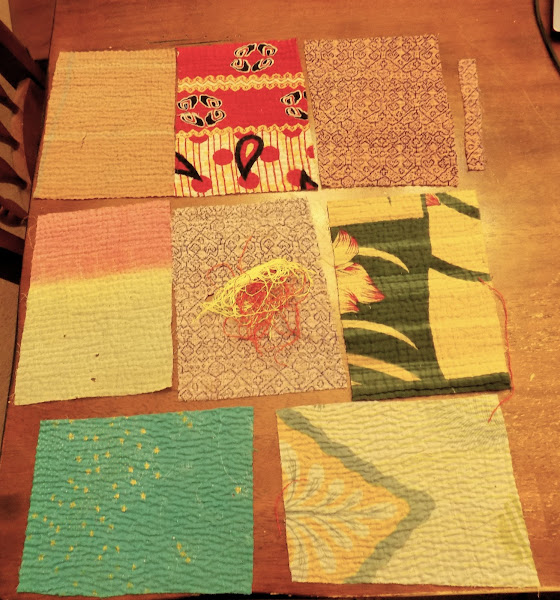Once a garment has for whatever reason become unwearable we think of it as trash. Not so in other countries, particularly in the east. For example, Japan has their traditions of boro and sakiori, and recycle so efficiently they could teach the rest of the world how to deal with their clothing waste.
Today I want to show you another way of recycling textiles: kantha quilts from India, which is a way of turning old saris and discarded textiles into quilts.
Here's a cutter piece from a kantha quilt. Kantha quilts are fairly easy (and cheap) to find on Etsy and eBay; I bought a bag of these scraps for my art quilting. It's a dense piece with simple running stitching which is easy to take apart. So let's see just how many layers it has.
According to some articles I read kantha quilting goes back at least 500 years. It was a way to creatively reuse old and unwanted clothing and create beautiful, colorful blankets for the family without having to spend money on new fabric. That's basically why American women started patchwork quilting here, too (we also couldn't get new fabric easily back when we were just the colonies.) Thriftiness and providing warmth have always been the quilting way.
Underneath the two outer layers of cotton cloth there's another bunch of layers held together by red running stitches. Let's take that apart and see what's inside.
I think the reason quilting still appeals to so many textile artists is that it comes from a long and rich tradition created by women for their families all over the world. It's the eternal hug from heart.
In the end my little swatch ended up having eight layers of cotton gauzy fabric in a bunch of different colors. I'm going to reuse them as backing for some of the mini-quilts from my 2025 calendar project so they don't go to waste, and I keep the tradition going. :)



Comments